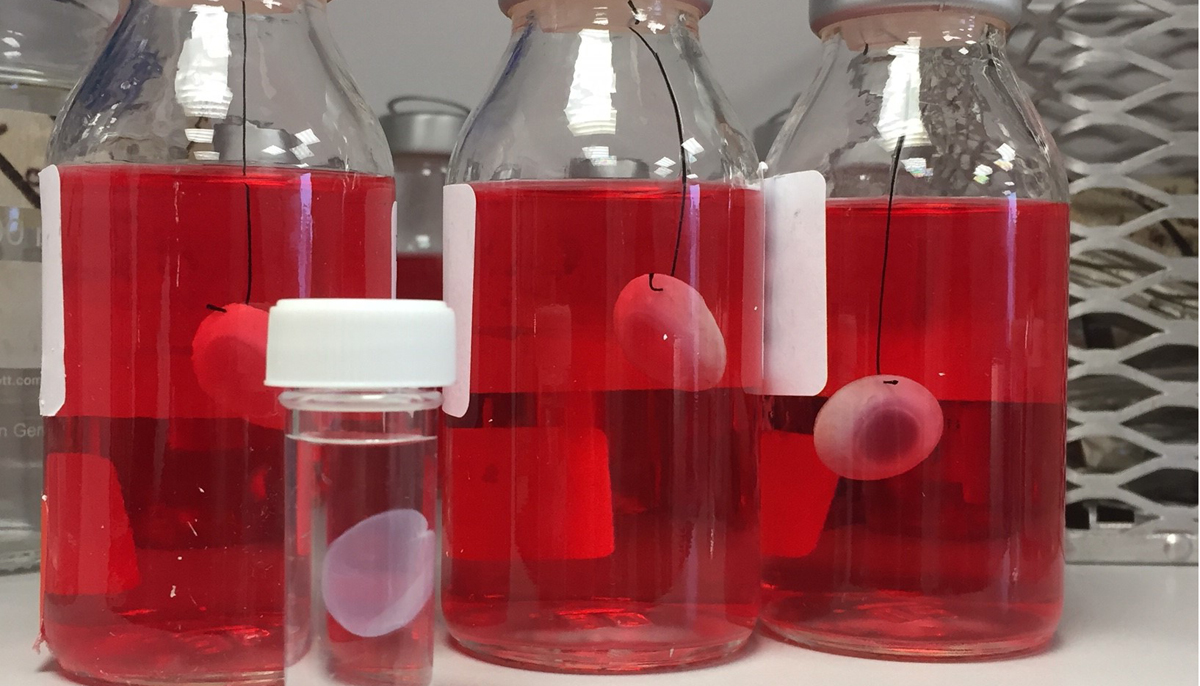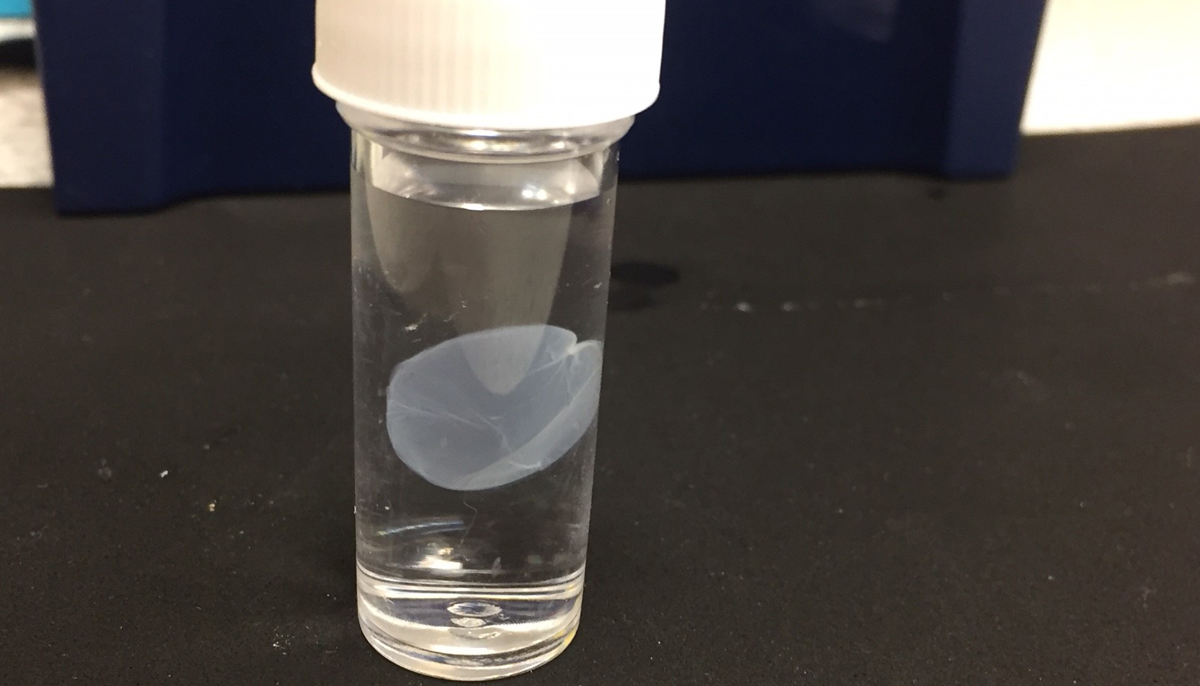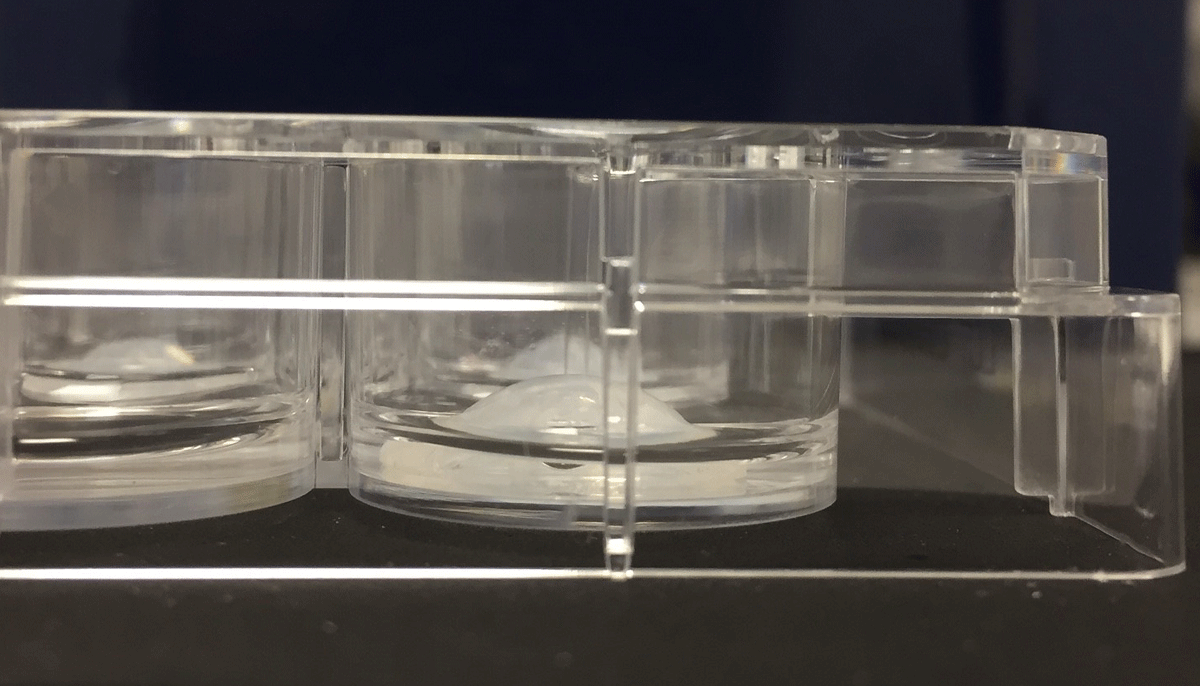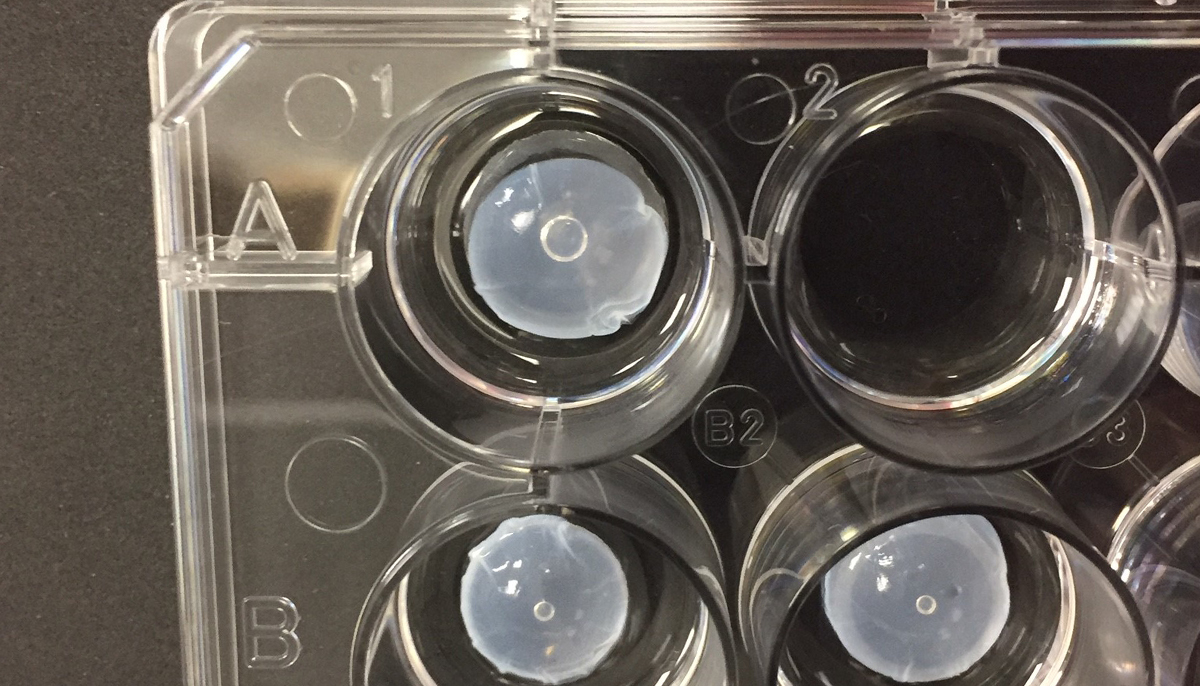Curve eye ture
Curve-eye-ture: how to grow artificial corneas
Published on: 20 October 2017
Scientists at Newcastle University, UK have developed a new method to grow curved human corneas improving the quality and transparency - solely by controlling the behaviour of cells in a dish.
The research carried out with colleagues at the University of California and published in Advanced Biosystems has revealed that corneal cells isolated from human donors and grown on curved surfaces arrange themselves in a very regular lattice-like organisation.
Cells grown this way achieve the precise alignment that gives the human cornea its strength and transparency. This new technique may revolutionise how artificial tissues are traditionally grown in laboratories around the world.
Lead researcher Che Connon, Professor of Tissue Engineering at Newcastle University explained: “We discovered that the cells grown on a dome-shaped surface behaved differently than those on flat one, crawling over the dome in a lattice-like structure – similar to a lattice pie crust.
“These cells then produced large amounts of aligned collagen, the natural fibres that make up the human cornea. This is also the arrangement normally found in the human eye, and there were no easy ways to recreate it in a dish…until now!
“Our tests showed that the alignment of cells and fibres allowed light to be better focused and made the cornea more transparent.
“This has never been seen before and has an important impact on how we think and develop new artificial tissues for human transplantation.”

Cornea transplants
A cornea transplant involves an operation to remove all or part of a damaged cornea, the clear outer layer at the front of the eye ball, and replace it with healthy donor tissue. It can be performed to improve sight, relieve pain, and treat severe infection or damage such as after an acid attack.
One of the most common reasons for a cornea transplant is a condition called keratoconus, which causes the cornea to change shape. Currently there is a shortage of donated corneas in the UK, Europe, and the USA. This shortage has worsened in recent years, as corneas cannot be used from anyone who has had laser eye surgery.
This breakthrough could provide a solution for the shortage of donated human corneal tissues and a practical alternative to the use of artificial plastic corneas which can be rejected by the body.
First author Dr Ricardo Martins Gouveia said: “This study suggests that we will be able to produce corneas that are more similar in shape and form to the natural eye, and likely to be better for transplantation compared with other artificial substitutes. We intend to carry out additional research and we think our team will be able to test these in humans within two years.”
Reference: Template curvature influences cell alignment to create improved human corneal tissue equivalents. Ricardo M Gouveia, Elena Koudouna, James Jester, Francisco Figueiredo, Che J Connon. Advanced Biosystems. doi.org/10.1002/adbi.201700135








